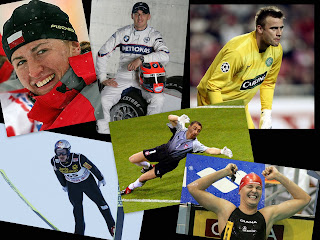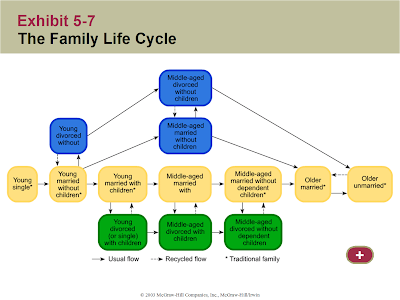
We were talking about Business-to-consumer (B2C, sometimes also called Business-to-Customer), so far. But recently we have started something quite different and contrasting- Business-to-business (B2B). It describes commerce transactions between businesses, such as between a manufacturer and a wholesaler, or between a wholesaler and a retailer.
Some people think marketing is marketing and whether you are marketing to consumers or marketing to businesses, you are still just marketing to people. But it is not the truth. Business-to-business (B2B) and business-to-consumer (B2C) marketing is different.
The volume of B2B transactions is much higher than the volume of B2C transactions. The primary reason for this is that in a typical supply chain there will be many B2B transactions involving subcomponent or raw materials, and only one B2C transaction, specifically sale of the finished product to the end customer. For example, an automobile manufacturer makes several B2B transactions such as buying tires, glass for windshields, and rubber hoses for its vehicles. The final transaction, a finished vehicle sold to the consumer, is a single (B2C) transaction.
Main differences:
B2C
•Product driven

•Maximize the value of the transaction
•Large target market
•Single step buying process, shorter sales cycle
•Brand identity created through repetition and imagery
•Merchandising and point of purchase activities
•Emotional buying decision based on status, desire, or price
B2B
•Relationship driven
•Maximize the value of the relationship
•Small, focused target market
•Multi-step buying process, longer sales cycle
•Brand identity created on personal relationship
•Educational and awareness building activities
•Rational buying decision based on business value

More about this topic you will find here:
http://vista-consulting.com/marketing-b2b-vs-b2c/
We were talking about types of organisations:
Government organisations
• Health
• Environmental protection
• Education
• Policing
• Transport
• National defence and security
Institutional organisations
• Not-for-profit
• Community-based organisations
Commercial organisations
• Distributors
• Original equipment manufacturers
• Users
• Retailers
Later, we were working in groups through the task sheet giving our best guesses to answer the questions. We had to consider three organisations:

1. Coca Cola
2. A Financial Services software house
3. An MRI Scanner manufacturer
For example, we agreed that Coca-Cola's customers are distributors and retailers. Financial Services Software supply companies (e.g banks) and MRI Scanner Manufacturer's customers are mainly hospitals and the private sector.
The number of potential customers and order value differs in each case:
• Coca Cola (UK) 50 million / £1-£5
• Financial Services software – 100s – all banks, building societies, mortgage lenders, loan companies / £50, 000
• MRI scanner manufacturer – 1 The NHS (possibly private hospital group) / £825, 000
We considered FTPEPS for these organizations as well:
Coke:
F – none
T - none (impulse)
P - none
E – none
P – none
S - none
FS Software:
F – high
T - high
P - high
E – High
P – Low
S - Low
MRI Scanner Manufacturer:
F - £825,000 of restricted budgets
T – possibly years
P – if it malfunctions it could kill by misdiagnosis
E – high risk for postholder
P – it could kill
S – local community may have helped to raise funds – many interested publics
In B2B Close-Supplier Relationship is very important. There are fewer clients, more money - more risk.
The better a business can manage the relationships it has with its customers the more successful it will become. It is called Customer relationship management.
CRM is not just the application of technology, but is a strategy to learn more about customers' needs and behaviours in order to develop stronger relationships with them.
CRM includes many aspects which relate directly to one another:
•Front office operations — Direct interaction with customers, e.g. face to face meetings, phone calls, e-mail, online services etc.
•Back office operations — Operations that ultimately affect the activities of the front office (e.g., billing, maintenance, planning, marketing, advertising, finance, manufacturing, etc.)
•Business relationships — Interaction with other companies and partners, such as suppliers/vendors and retail outlets/distributors, industry networks (lobbying groups, trade associations). This external network supports front and back office activities.
•Analysis — Key CRM data can be analyzed in order to plan target-marketing campaigns, conceive business strategies, and judge the success of CRM activities (e.g., market share, number and types of customers, revenue, profitability).

We were talking also about Derived Demand. According to Investopedia it is a term used in economic analysis that describes the demand placed on one good or service as a result of changes in the price for some other related good or service. It is a demand for some physical or intangible thing where a market exists for both related goods and services in question. The derived demand can have a significant impact on the derived good's market price.
Tickets are a derived demand for entertainment. Entertainment is the demand being satisfied when a ticket is bought; it is purely a means to an end. The ticket is not an end in itself. The ticket is merely a license to attend a specified event at a specified time and place. The ticket agency is merely that, an agent of the principal (the event owner) authorized to make a transaction with a prospective attendee on the behalf of the principle.
Factors Affecting Demand Elasticity:
•The availability of substitutes
•Amount of income available to spend on the good
•Time
The next important thing which Ruth asked us was how many people are involved in a purchase of a can of coke, a software system for a bank and MRI scanner. In order to buy coke there is a need of one person but the purchase of MRI scanner is much more complex and it involves a lot of people.
We were talking about three important terms as well:

•Direct purchasing - Investors making direct purchases deal directly with the fund company over the phone, in person at investor centers, or by mail.
•Reciprocity - Products not always bought for cash, they can be exchanged between the two companies.
•Leasing - A contract granting use or occupation of property during a specified period in exchange for a specified rent.
More about B2B and B2C you will find in this article:
http://www.bizjournals.com/denver/stories/2006/04/03/focus2.html














































